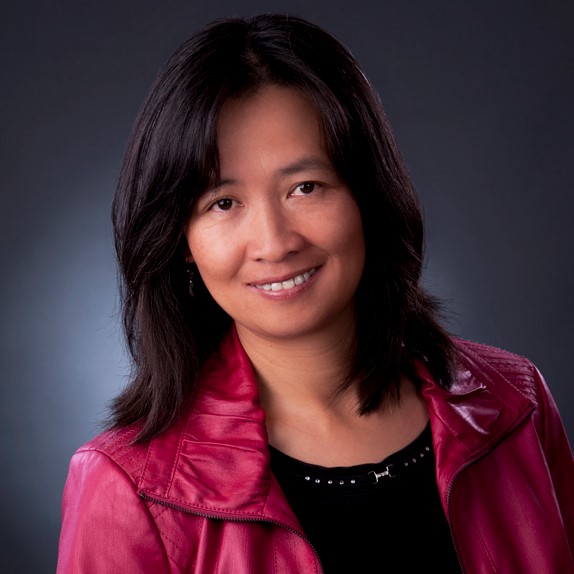Dan-Xia Xu
National Research Council of Canada, CanadaFor outstanding contributions to the science, technology, and applications of integrated optics.

Dan-Xia Xu was born in the picturesque mountains of Yunnan, China. In her childhood, a set of popular Chinese science books about a little girl who always asks questions sparked Dan-Xia’s interest in science. Reading those books generated a curiosity about the natural world that has stayed with her ever since. After the university entrance exams at the end of high school, she was enticed to join the Physics Department at the University of Science and Technology of China, one of the top three universities in China at that time. She gladly accepted, and so started her career in physics.
She graduated from the university at a time when China was opening up to the world. She ventured far, to Sweden, to pursue her Ph.D. studies. Her demonstration of heterojunction bipolar transistors based on a new material platform, the silicon-germanium (SiGe) alloy, was among the first in the world. After obtaining her doctoral degree, she was invited to join the research in SiGe devices as a postdoc at the National Research Council of Canada, a leading group in that field. The new city, new continent, then became her home.
Dan-Xia has worked for the National Research Council of Canada for the last 25 years and is currently a Principal Research Officer. Her earlier work was on novel electronic devices, silicide materials for deep submicron CMOS, and photodetectors. After a stint in a spin-off company developing highly compact wavelength demultiplexers in the early 2000’s, Dan-Xia switched her research focus to integrated photonics, and particularly silicon photonics. She started in this field very early, in early 90’s when the phrase ‘silicon photonics’ would be laughed at. Now this is a thriving field of research and commercialization, with applications in many areas from the main drive of optical communication to different types of sensing, LIDAR for autonomous vehicles, astrophotonic instrumentation and quantum computing. There are a few achievements she would take note. She discovered that strain-induced change in the material refractive index can be used effectively to manage the birefringence in silicon photonic components. Exploiting the strong evanescent field present in silicon wire waveguide spiral ring resonators, the NRC team developed a highly sensitive, compact and high throughput bio-sensing system. Recently she embarked in a new direction, developing methodologies to incorporate artificial intelligence (AI) and machine learning into photonic component design. AI is transforming how we do things in so many areas, and she is excited to explore these new horizons in photonics.
OSA has been important to Dan-Xia’s career. She has been involved with OSA because of the opportunities to work her way up through the volunteer ranks, from conference committee member to conference chair. This allowed her to gain different experience from her research and meet people from around the world. She also appreciates the diversity of OSA’s volunteers and the opportunity to serve in different roles.
“To do science, you have to like it,” she says. Researchers need to enjoy the day-to-day delight of discovery and realize that doing science is “not just about the destination, but also the journey.”
Profile written by Jeanette Gass
